UAE project integrates aquaculture with biofuel farm
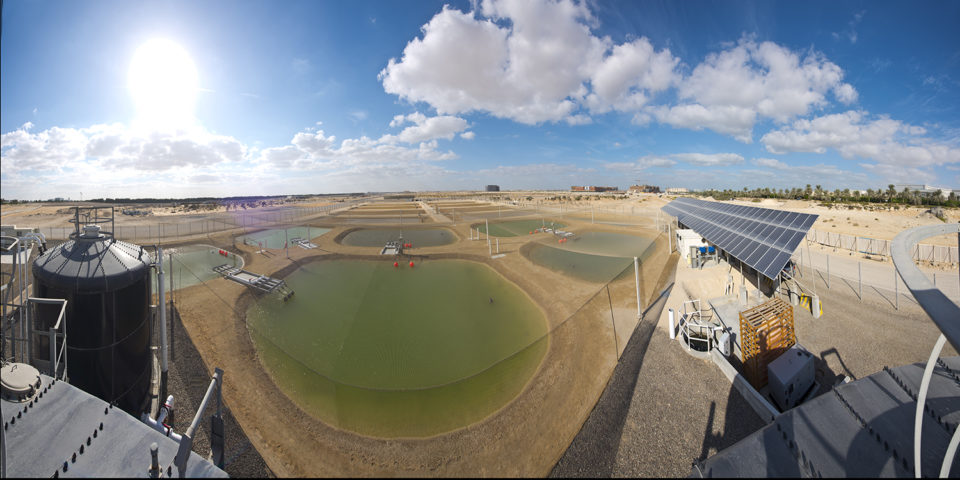
University of Arizona researcher Carl Hodges first proposed using aquaculture effluent to irrigate halophyte crops – salt-tolerant plants – in the 1970s. He saw it as a way to convert coastal deserts into agriculturally productive lands. Projects based on his idea have been tried in Mexico, Africa and Indonesia, where the plants were grown for animal feed or cooking oil. Now, a project in the United Arab Emirates is applying the concept to producing biofuel for the aviation industry.
“It’s quite novel,” said Kevin Fitzsimmons, an aquaculture scientist at the University of Arizona, and team leader for the Myanmar Sustainable Aquaculture Program. It’s the first time the model has been tested on biofuel crops, he said.
As a proof of concept, biofuel produced by the project was blended with regular jet fuel for an Etihad Airways flight from Abu Dhabi to Amsterdam in January.
The Seawater Energy and Agriculture System (SEAS) launched in 2016 as a pilot project on two acres at the Khalifa University campus in Masdar City, UAE. Seawater from the Persian Gulf was added to six open-air aquaculture ponds, where fish and shrimp are grown to market size. Effluent flowed into an eight-field halophyte farm, where it was used to irrigate Salicornia bigelovii, a salt-tolerant plant also known as sea asparagus. Excess water was then filtered through two mangrove wetlands to further clean it before recirculating into the fish ponds.
“The environmental impact is minimal, because you end up consumptively using the water after circulating it two or three times,” said Fitzsimmons, who consulted briefly on the project. “There’s nothing going back to the ocean as effluent.”
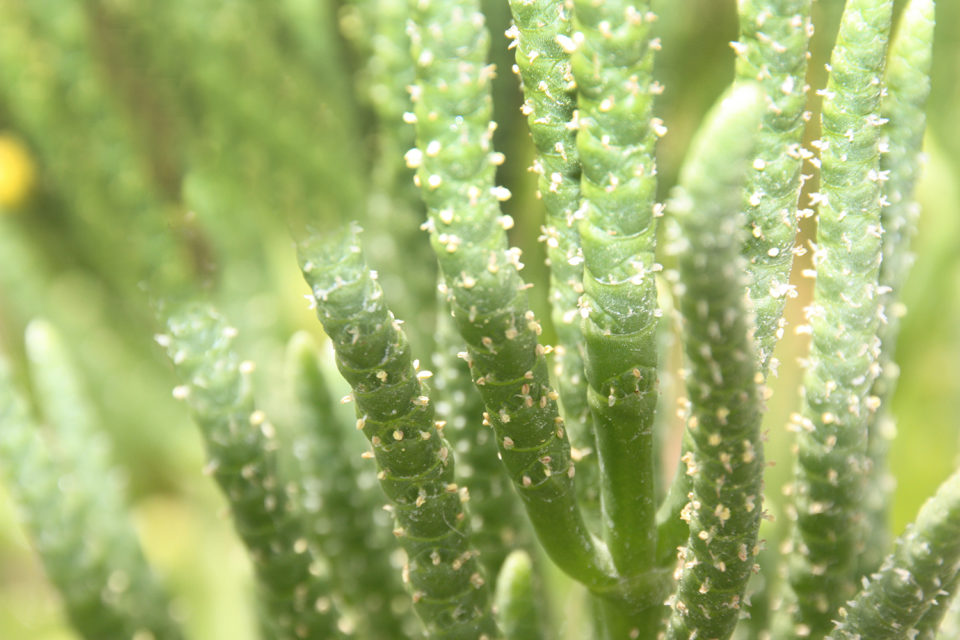
Etihad Airways, Boeing and the Abu Dhabi National Oil Refining Company are partnering with Khalifa University on the project, as the aviation industry has been interested in developing biofuels for some time. But industry leaders have hesitated to embrace biofuels, because of the potential to displace human food crops. That’s why salicornia was an attractive alternative.
“It’s an ideal candidate to explore,” said Alejandro Rios, who heads SEAS as director of Khalifa’s Sustainable Bioenergy Research Consortium. “We’re not using fresh water to grow it, and we’re not using arable land,” he said, adding that, with the addition of the mangrove forest, the project has the potential to be carbon-neutral.
Aquaculture is a key component of the system, Rios explained, not only for its role in irrigating the fuel crop, but also as a marketable product.
“This is a food-secure region, but 90 percent of its food is imported,” he said. “So the idea of being able to produce fish sustainably was very appealing.”
The group tested tilapia, using a local species adapted to live in salty conditions, as well as Indian white shrimp and sea bream.
“The tilapia grew very well, and the shrimp grew very well,” Rios said. “The sea bream were quite sensitive and we didn’t have good results.”
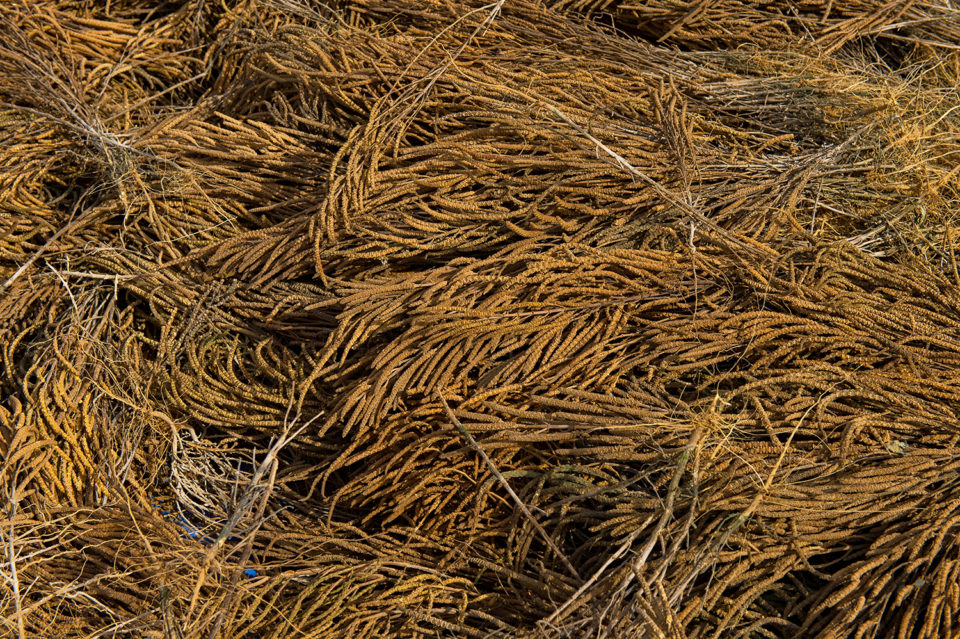
Combining biofuel production with aquaculture also protects the project economically, Fitzsimmons said.
“With an integrated farm like this, it reduces your risk from low fish or shrimp prices, or even low biofuel prices,” he said. “The technology is not super difficult, it’s just how you integrate it to be efficient, and make sure the different parts can all make money together.”
Worldwide, industrial-scale biofuel crops are largely government-subsidized, Rios noted.
“Our idea is that we’re going to be able to produce a barrel of vegetable oil at zero cost,” he said. “Instead of obtaining the subsidy from government, what we are proposing is that our subsidy comes from the return on investment from an aquaculture farm.”
Focusing on biofuel production opens up new opportunities for industry partners like Boeing and Etihad, groups which not only bring funding to the table, but also a wealth of technical expertise, Fitzsimmons said.
There’s a couple thousand kilometers of desert seacoasts around the world, and many of them are in countries that have serious employment and food security issues.
It also brings a different set of challenges to the project, including determining how to grow and process the oil seed most efficiently.
“They’ve got some really good labs there to do a lot of the analysis right there on site,” Fitzsimmons said. That can include experimenting with different fertilization rates to improve seed yield or increase the amount of oil stored in the seeds, as well as looking at how to stock the aquaculture side of the operation to produce the ideal effluent for the salicornia.
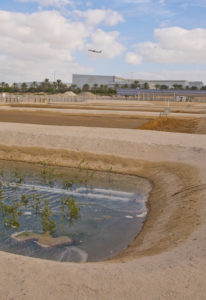
Rios says the pilot project helped convince skeptics that biofuels could be a viable option in a part of the world where agriculture is almost impossible, due to the harsh climate.
“When you talk about biofuels in this region, they dismiss it, because biofuels are produced with fresh water and arable land on a grand scale. They say, ‘it’s crazy, it’s impossible,’” he said. “But in our pilot facility, we have been able to grow the salicornia succssfully, and we’ve been able to grow the fish successfully.”
SEAS is now in the process of building out the project into a nearly 500-acre demonstration site. The expanded project will include a retooling of the aquaculture system, which encountered “quite a number of challenges” in the pilot project, Rios acknowledged, due to a flawed design, which was created by a consultant.
The open-pond system was lined with HDPE geomembrane liners to prevent mixing of the ocean water with the area’s hyper-saline groundwater. Clay used to cover the liner eroded into the ponds and clogged drainage pipes, slowing down the irrigation of the salicornia fields.
“This created a chain reaction of problems we needed to fix,” Rios said.
The group is now working with an aquaculture consultant on its redesign of the system and to develop a set of standard operating procedures for the operation.
They’re also looking at testing different fish species with the potential for better market acceptability, including hamour, a local grouper species.
“We’re in transition to finally build this 200-hectare demonstration-scale facility, for which the aquaculture portion will be the financial driver of the project, so we want to be sure this facility is commercially successful,” he said. With an estimated construction time of 18 months, the group hopes to begin operations in mid-2022.
Fitzsimmons is excited to see the project move into its next phase.
“I think the potential to scale it up is incredible,” he said. “There’s a couple thousand kilometers of desert seacoasts around the world, and many of them are in countries that have serious employment and food security issues.”
Follow the Advocate on Twitter @GAA_Advocate
Now that you've reached the end of the article ...
… please consider supporting GSA’s mission to advance responsible seafood practices through education, advocacy and third-party assurances. The Advocate aims to document the evolution of responsible seafood practices and share the expansive knowledge of our vast network of contributors.
By becoming a Global Seafood Alliance member, you’re ensuring that all of the pre-competitive work we do through member benefits, resources and events can continue. Individual membership costs just $50 a year.
Not a GSA member? Join us.
Author
-
Ilima Loomis
Ilima Loomis (ilimaloomis.com) is a freelance writer in Hawaii who covers science, travel and business.
Tagged With
Related Posts
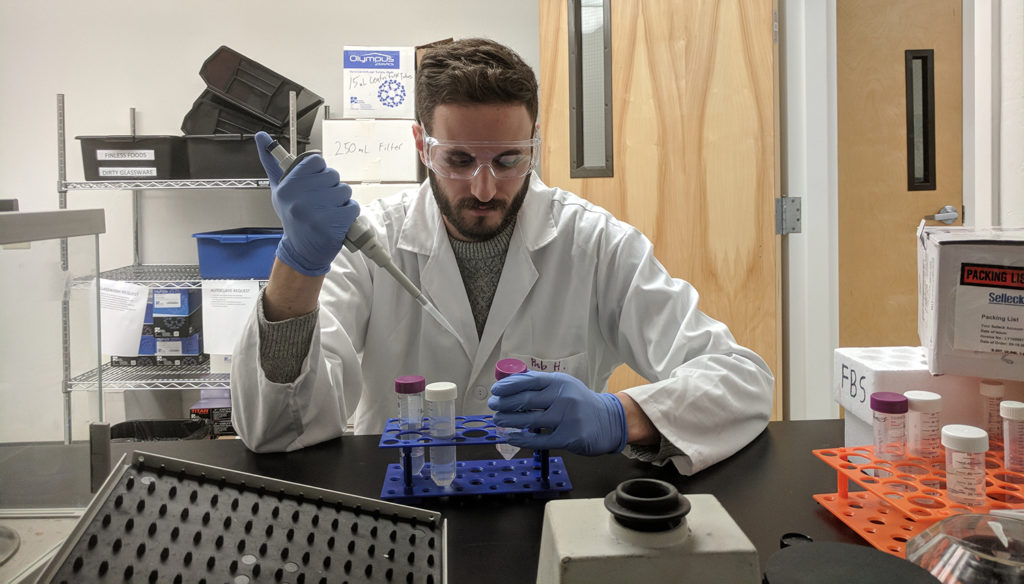
Innovation & Investment
Petri dish to plate: How close is cellular seafood?
Companies growing meat in laboratories need to overcome challenges including cost, regulation and consumer acceptance. Proponents believe there’s a place in the market for lab-grown fish meat.
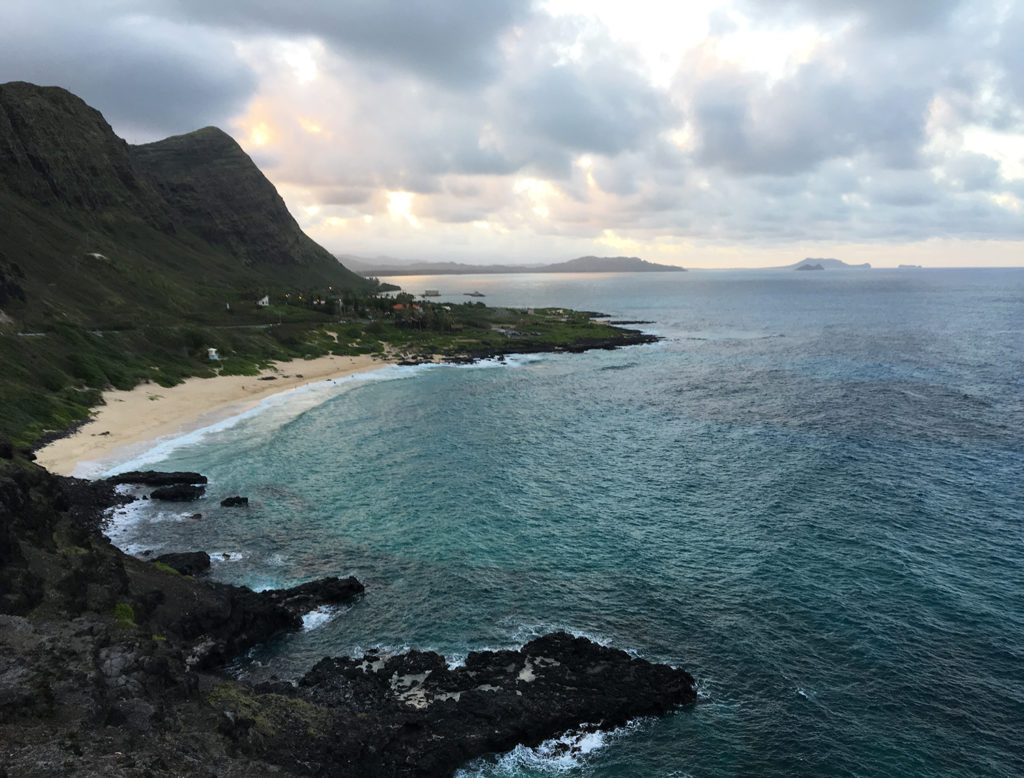
Health & Welfare
Born in Hawaii, SPF broodstock shrimp industry faces globalization
The next step for shrimp breeding will be developing animals that aren’t just disease-free, but increasingly resistant to multiple pathogens. The industry is globalizing, with suppliers setting up shop overseas. But its birthplace will always be Hawaii.
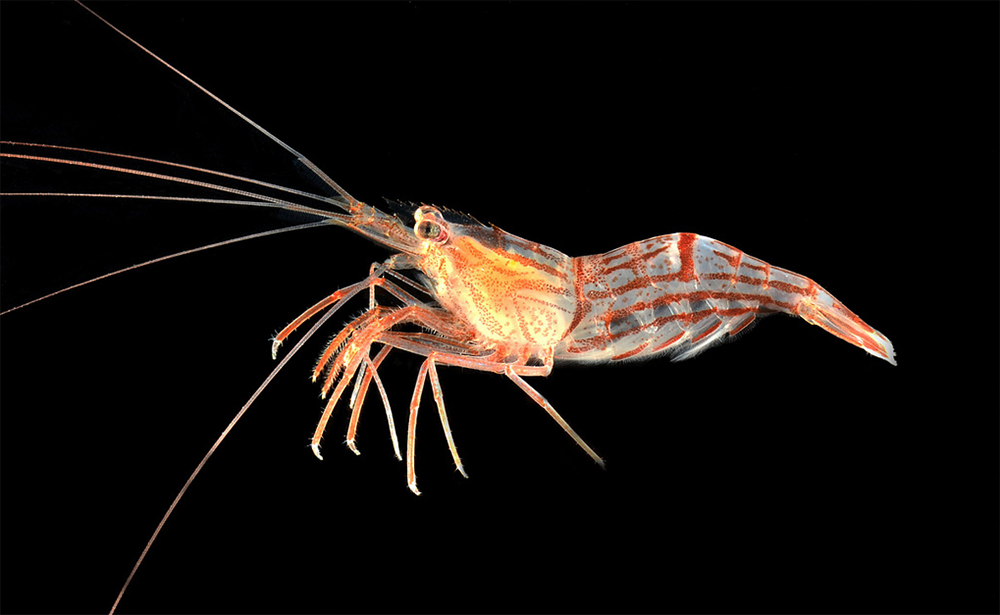
Responsibility
Parasite control in aquaculture takes teamwork
Researchers in Australia are experimenting with a biological control for warmer climates: a parasite-eating shrimp popular with aquarium enthusiasts.
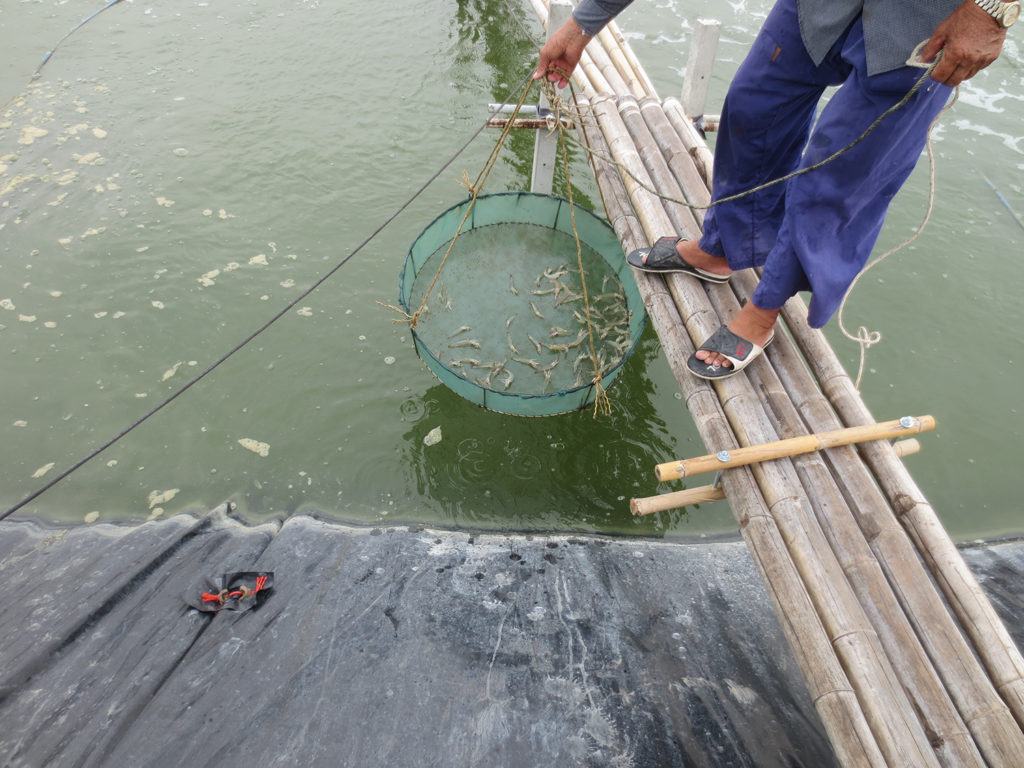
Health & Welfare
The unmet promise of pondside PCR
A new generation of technology, portable PCR, offers potential for affordable, immediate, pondside diagnosis in easy-to-use handheld kits. But will it live up to the hype?


